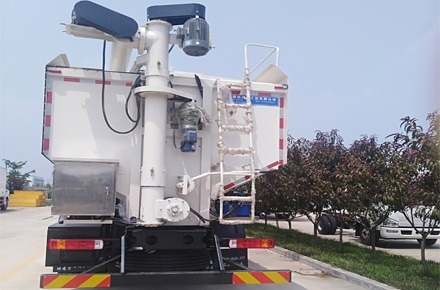A pneumatic tanker, a marvel of engineering in bulk transport, plays a crucial role in industries ranging from construction to agriculture, handling the efficient transportation of dry bulk materials like cement, flour, and sand. This specialized vehicle utilizes pneumatic principles to achieve its task, offering versatility and efficiency in material handling. Understanding the inner workings of a pneumatic tanker unveils a sophisticated blend of technology and practicality designed to meet diverse industrial demands.
Overview of Pneumatic Tankers
Pneumatic tankers are specifically designed to transport dry bulk materials in powdered or granular form. Unlike liquid tankers, which use gravity to discharge their contents, pneumatic tankers employ compressed air to unload materials. This distinction makes them essential in industries where precise delivery of dry bulk materials is paramount.
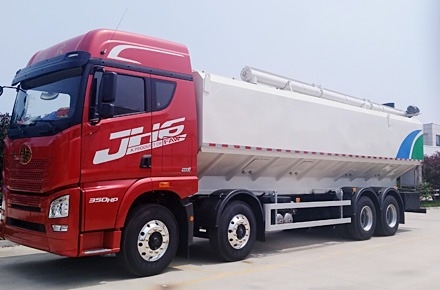
Structural Design
The design of a pneumatic tanker is distinctive, emphasizing both durability and functionality. Typically, these tankers are cylindrical, with a reinforced shell to withstand the pressure exerted by the materials they carry and the pneumatic forces during loading and unloading. The tanker’s construction includes multiple compartments to accommodate different materials, ensuring efficient transport without contamination.
Pneumatic System Components
Central to the operation of a pneumatic tanker is its pneumatic system, which comprises several key components:
- Compressor: The heart of the pneumatic tanker generates compressed air necessary for both loading and unloading operations. It converts mechanical energy into pneumatic energy, creating high-pressure air that powers the tanker’s functions.
- Air Hoses and Valves: These components form the pathway for the compressed air within the tanker. Valves control the flow of air to different compartments, enabling precise loading and discharge of materials.
- Filtration System: Given the sensitivity of dry bulk materials to contamination, pneumatic tankers are equipped with advanced filtration systems. These systems ensure that only clean, dry air enters the tanker during loading, preventing moisture or foreign particles from compromising the material’s quality.
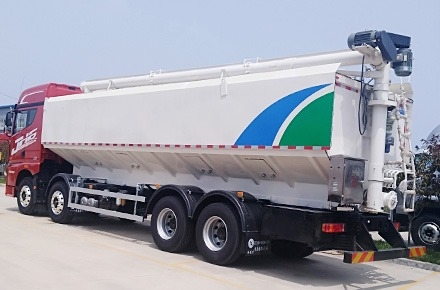
Loading Process
Loading dry bulk materials into a pneumatic tanker involves a systematic approach to ensure efficiency and safety:
- Connecting to Silos: The tanker is positioned adjacent to the silo or storage facility containing the material.
- Air Supply: The tanker’s compressor activates, creating a vacuum or pressure differential that facilitates material flow into the tanker.
- Filtering: As materials enter the tanker, the filtration system ensures that only clean air is expelled, maintaining material integrity.
Unloading Process
Unloading operations with a pneumatic tanker are equally methodical, driven by the principles of pneumatic pressure:
- Positioning: The tanker is maneuvered to the unloading site, typically over a receiving hopper or designated area.
- Pressurization: Compressed air is directed into the tanker’s compartments, creating a pressure differential that forces the material out through discharge pipes.
- Controlled Discharge: Valves regulate the flow of material, allowing for precise distribution as required by the application.
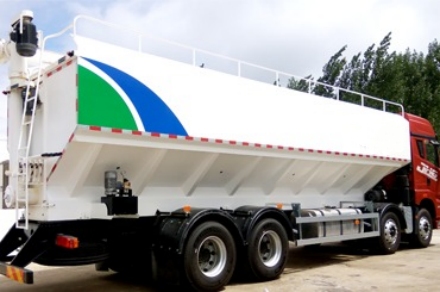
Applications Across Industries
Pneumatic tankers find widespread use in various industries:
- Construction: Transporting cement, sand, and other construction materials to sites where traditional methods are impractical.
- Agriculture: Handling fertilizers, seeds, and grains with minimal contamination, ensuring product integrity.
- Food Industry: Transporting flour, sugar, and other food-grade materials under sanitary conditions.
- Chemical Industry: Handling powders and granules safely, minimizing exposure and contamination risks.
Maintenance and Safety Considerations
Maintaining a pneumatic tanker involves regular inspection and servicing of its pneumatic and structural components. Safety protocols are crucial, given the potential hazards associated with handling compressed air and dry bulk materials. Operators undergo rigorous training to manage loading, transport, and unloading operations safely.
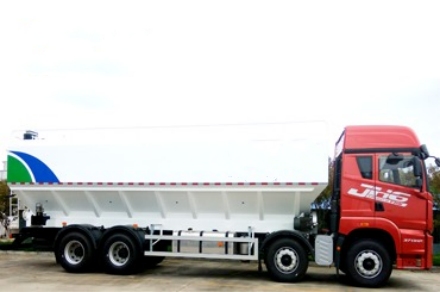
Future Trends
Advancements in pneumatic tanker technology focus on enhancing efficiency and reducing environmental impact:
- Advanced Filtration: Improving filtration systems to achieve higher levels of purity and reduce air emissions.
- Automation: Integrating automated systems for precise control of loading and unloading processes, enhancing operational efficiency.
- Material Innovation: Exploring lightweight yet durable materials for tanker construction, improving payload capacity and fuel efficiency.
Conclusion
In conclusion, the pneumatic tanker stands as a testament to innovation in bulk material transport, leveraging pneumatic principles to deliver efficiency, reliability, and safety across diverse industries. As technology advances and industrial demands evolve, the role of pneumatic tankers continues to expand, ensuring the seamless transport of dry bulk materials essential for global infrastructure and economic growth. Understanding how these sophisticated vehicles work illuminates their vital contribution to modern industrial logistics.
